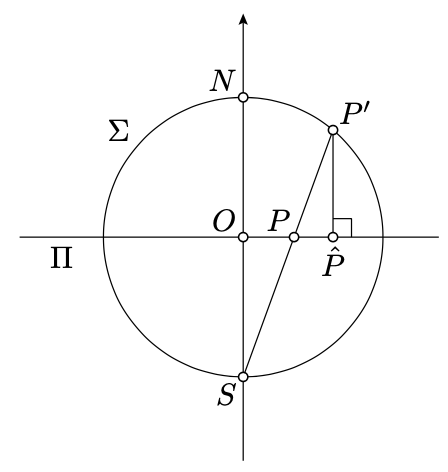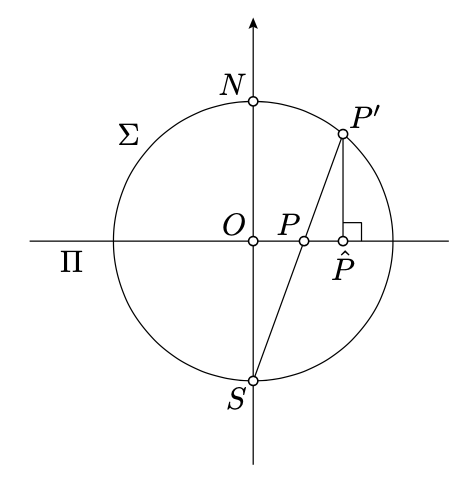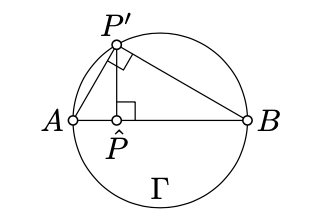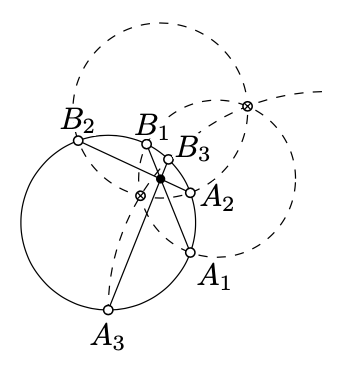17.1: Special bijection on the h-plane
- Page ID
- 23689
\( \newcommand{\vecs}[1]{\overset { \scriptstyle \rightharpoonup} {\mathbf{#1}} } \)
\( \newcommand{\vecd}[1]{\overset{-\!-\!\rightharpoonup}{\vphantom{a}\smash {#1}}} \)
\( \newcommand{\dsum}{\displaystyle\sum\limits} \)
\( \newcommand{\dint}{\displaystyle\int\limits} \)
\( \newcommand{\dlim}{\displaystyle\lim\limits} \)
\( \newcommand{\id}{\mathrm{id}}\) \( \newcommand{\Span}{\mathrm{span}}\)
( \newcommand{\kernel}{\mathrm{null}\,}\) \( \newcommand{\range}{\mathrm{range}\,}\)
\( \newcommand{\RealPart}{\mathrm{Re}}\) \( \newcommand{\ImaginaryPart}{\mathrm{Im}}\)
\( \newcommand{\Argument}{\mathrm{Arg}}\) \( \newcommand{\norm}[1]{\| #1 \|}\)
\( \newcommand{\inner}[2]{\langle #1, #2 \rangle}\)
\( \newcommand{\Span}{\mathrm{span}}\)
\( \newcommand{\id}{\mathrm{id}}\)
\( \newcommand{\Span}{\mathrm{span}}\)
\( \newcommand{\kernel}{\mathrm{null}\,}\)
\( \newcommand{\range}{\mathrm{range}\,}\)
\( \newcommand{\RealPart}{\mathrm{Re}}\)
\( \newcommand{\ImaginaryPart}{\mathrm{Im}}\)
\( \newcommand{\Argument}{\mathrm{Arg}}\)
\( \newcommand{\norm}[1]{\| #1 \|}\)
\( \newcommand{\inner}[2]{\langle #1, #2 \rangle}\)
\( \newcommand{\Span}{\mathrm{span}}\) \( \newcommand{\AA}{\unicode[.8,0]{x212B}}\)
\( \newcommand{\vectorA}[1]{\vec{#1}} % arrow\)
\( \newcommand{\vectorAt}[1]{\vec{\text{#1}}} % arrow\)
\( \newcommand{\vectorB}[1]{\overset { \scriptstyle \rightharpoonup} {\mathbf{#1}} } \)
\( \newcommand{\vectorC}[1]{\textbf{#1}} \)
\( \newcommand{\vectorD}[1]{\overrightarrow{#1}} \)
\( \newcommand{\vectorDt}[1]{\overrightarrow{\text{#1}}} \)
\( \newcommand{\vectE}[1]{\overset{-\!-\!\rightharpoonup}{\vphantom{a}\smash{\mathbf {#1}}}} \)
\( \newcommand{\vecs}[1]{\overset { \scriptstyle \rightharpoonup} {\mathbf{#1}} } \)
\( \newcommand{\vecd}[1]{\overset{-\!-\!\rightharpoonup}{\vphantom{a}\smash {#1}}} \)
\(\newcommand{\avec}{\mathbf a}\) \(\newcommand{\bvec}{\mathbf b}\) \(\newcommand{\cvec}{\mathbf c}\) \(\newcommand{\dvec}{\mathbf d}\) \(\newcommand{\dtil}{\widetilde{\mathbf d}}\) \(\newcommand{\evec}{\mathbf e}\) \(\newcommand{\fvec}{\mathbf f}\) \(\newcommand{\nvec}{\mathbf n}\) \(\newcommand{\pvec}{\mathbf p}\) \(\newcommand{\qvec}{\mathbf q}\) \(\newcommand{\svec}{\mathbf s}\) \(\newcommand{\tvec}{\mathbf t}\) \(\newcommand{\uvec}{\mathbf u}\) \(\newcommand{\vvec}{\mathbf v}\) \(\newcommand{\wvec}{\mathbf w}\) \(\newcommand{\xvec}{\mathbf x}\) \(\newcommand{\yvec}{\mathbf y}\) \(\newcommand{\zvec}{\mathbf z}\) \(\newcommand{\rvec}{\mathbf r}\) \(\newcommand{\mvec}{\mathbf m}\) \(\newcommand{\zerovec}{\mathbf 0}\) \(\newcommand{\onevec}{\mathbf 1}\) \(\newcommand{\real}{\mathbb R}\) \(\newcommand{\twovec}[2]{\left[\begin{array}{r}#1 \\ #2 \end{array}\right]}\) \(\newcommand{\ctwovec}[2]{\left[\begin{array}{c}#1 \\ #2 \end{array}\right]}\) \(\newcommand{\threevec}[3]{\left[\begin{array}{r}#1 \\ #2 \\ #3 \end{array}\right]}\) \(\newcommand{\cthreevec}[3]{\left[\begin{array}{c}#1 \\ #2 \\ #3 \end{array}\right]}\) \(\newcommand{\fourvec}[4]{\left[\begin{array}{r}#1 \\ #2 \\ #3 \\ #4 \end{array}\right]}\) \(\newcommand{\cfourvec}[4]{\left[\begin{array}{c}#1 \\ #2 \\ #3 \\ #4 \end{array}\right]}\) \(\newcommand{\fivevec}[5]{\left[\begin{array}{r}#1 \\ #2 \\ #3 \\ #4 \\ #5 \\ \end{array}\right]}\) \(\newcommand{\cfivevec}[5]{\left[\begin{array}{c}#1 \\ #2 \\ #3 \\ #4 \\ #5 \\ \end{array}\right]}\) \(\newcommand{\mattwo}[4]{\left[\begin{array}{rr}#1 \amp #2 \\ #3 \amp #4 \\ \end{array}\right]}\) \(\newcommand{\laspan}[1]{\text{Span}\{#1\}}\) \(\newcommand{\bcal}{\cal B}\) \(\newcommand{\ccal}{\cal C}\) \(\newcommand{\scal}{\cal S}\) \(\newcommand{\wcal}{\cal W}\) \(\newcommand{\ecal}{\cal E}\) \(\newcommand{\coords}[2]{\left\{#1\right\}_{#2}}\) \(\newcommand{\gray}[1]{\color{gray}{#1}}\) \(\newcommand{\lgray}[1]{\color{lightgray}{#1}}\) \(\newcommand{\rank}{\operatorname{rank}}\) \(\newcommand{\row}{\text{Row}}\) \(\newcommand{\col}{\text{Col}}\) \(\renewcommand{\row}{\text{Row}}\) \(\newcommand{\nul}{\text{Nul}}\) \(\newcommand{\var}{\text{Var}}\) \(\newcommand{\corr}{\text{corr}}\) \(\newcommand{\len}[1]{\left|#1\right|}\) \(\newcommand{\bbar}{\overline{\bvec}}\) \(\newcommand{\bhat}{\widehat{\bvec}}\) \(\newcommand{\bperp}{\bvec^\perp}\) \(\newcommand{\xhat}{\widehat{\xvec}}\) \(\newcommand{\vhat}{\widehat{\vvec}}\) \(\newcommand{\uhat}{\widehat{\uvec}}\) \(\newcommand{\what}{\widehat{\wvec}}\) \(\newcommand{\Sighat}{\widehat{\Sigma}}\) \(\newcommand{\lt}{<}\) \(\newcommand{\gt}{>}\) \(\newcommand{\amp}{&}\) \(\definecolor{fillinmathshade}{gray}{0.9}\)Consider the conformal disc model with the absolute at the unit circle \(\Omega\) centered at \(O\). Choose a coordinate system \((x,y)\) on the plane with the origin at \(O\), so the circle \(\Omega\) is described by the equation \(x^2+y^2=1\).

The plane thru \(P, O\), and \(S\).
Let us think that our plane is the coordinate \(xy\)-plane in the Euclidean space; denote it by \(\Pi\). Let \(\Sigma\) be the unit sphere centered at \(O\); it is described by the equation
\(x^2+y^2+z^2=1.\)
Set \(S=(0,0,-1)\) and \(N=(0,0,1)\); these are the south and north poles of \(\Sigma\).
Consider stereographic projection \(\Pi\to\Sigma\) from \(S\); given point \(P\in\Pi\) denote its image in \(\Sigma\). Note that the h-plane is mapped to the north hemisphere; that is, to the set of points \((x,y,z)\) in \(\Sigma\) described by the inequality \(z>0\).
For a point \(P'\in \Sigma\) consider its foot point \(\hat P\) on \(\Pi\); this is the closest point to \(P'\).
Note that the composition \(P \leftrightarrow P' \leftrightarrow \hat{P}\) of these two maps gives a bijection from the h-plane to itself. Further note that \(P=\hat{P}\) if and only if \(P\in \Omega\) or \(P=O\).
Suppose that \(P\leftrightarrow \hat P\) is the bijection described above. Assume that \(P\) is a point of h-plane distinct from the center of absolute and \(Q\) is its inverse in the absolute. Show that the midpoint of \([PQ]\) is the inversion of \(\hat{P}\) in the absolute.
- Hint
-

Let \(N, O, S, P, P'\) and \(\hat{P}\) be as on the diagram above.
Note that \(QQ = \dfrac{1}{x}\) and therefore we need to show that \(O\hat{P} = 2/(x + \dfrac{1}{x})\). To do this, show and use that \(\triangle SOP \sim \triangle SP'N \sim \triangle P'\hat{P}P\) and \(2 \cdot SO = NS\).
Let \((PQ)_h\) be an h-line with the ideal points \(A\) and \(B\). Then \(\hat P,\hat Q\in[AB]\).
Moreover,
\[\dfrac{A \hat{Q} \cdot B \hat{P}}{\hat{QB}\cdot \hat{P}A} = (\dfrac{AQ\cdot BP}{QB\cdot PA})^2. \]
In particular, if \(A,P,Q,B\) appear in the same order, then
\(PQ_h=\dfrac{1}{2} \cdot \ln \dfrac{A\hat{Q}\cdot B\hat{P}}{\hat{Q}B\cdot \hat{P}A}.\)
- Proof
-
Consider the stereographic projection \(\Pi \to \Sigma\) from the south pole \(S\). Note that it fixes \(A\) and \(B\); denote by \(P'\) and \(Q'\) the images of \(P\) and \(Q\);
According to Theorem 16.3.1c,
\[\dfrac{AQ\cdot BP}{QB\cdot PA}=\dfrac{AQ'\cdot BP'}{Q'B\cdot P'A}.\]
By Theorem Theorem 16.3.1e, each circline in \(\Pi\) that is perpendicular to \(\Omega\) is mapped to a circle in \(\Sigma\) that is still perpendicular to \(\Omega\). It follows that the stereographic projection sends \((PQ)_h\) to the intersection of the north hemisphere of \(\Sigma\) with a plane perpendicular to \(\Pi\).
Suppose that \(\Lambda\) denotes the plane; it contains the points \(A\), \(B\), \(P'\), \(\hat P\) and the circle \(\Gamma=\Sigma\cap\Lambda\). (It also contains \(Q'\) and \(\hat{Q}\) but we will not use these points for a while.)

The plane \(\Lambda\).Note that
- \(A,B,P'\in\Gamma\),
- \([AB]\) is a diameter of \(\Gamma\),
- \((AB)=\Pi\cap\Lambda\),
- \(\hat{P} \in [AB]\)
- \((P'\hat{P} \perp (AB).\)
Since \([AB]\) is the diameter of \(\Gamma\), by Corollary 9.8, the angle \(AP'B\) is right. Hence \(\triangle A\hat PP' \sim \triangle AP'B \sim \triangle P'\hat PB\). In particular
\(\dfrac{AP'}{BP'}=\dfrac{A \hat{P}}{P'\hat{P}}=\dfrac{P'\hat{P}}{B\hat{P}}.\)
Therefore
\[\dfrac{A\hat{P}}{B\hat{P}}=(\dfrac{AP'}{BP'})^2.\]
The same way we get that
\[\dfrac{A\hat{Q}}{B\hat{Q}}=(\dfrac{AQ'}{BQ'})^2.\]
Finally, note that 17.1.2+17.1.3+17.1.4 imply 17.1.1
The last statement follows from 17.1.1 and the definition of h-distance. Indeed,
\(\begin{aligned} PQ_h&:=\ln\frac{A Q\cdot B P}{QB\cdot PA}= \\ &=\ln\left(\frac{A \hat Q\cdot B \hat P}{\hat QB\cdot \hat PA}\right)^{\frac12}= \\ &=\tfrac12\cdot\ln\frac{A \hat Q\cdot B \hat P}{\hat QB\cdot \hat PA}.\end{aligned}\)
Let \(\Gamma_1\), \(\Gamma_2\), and \(\Gamma_3\) be three circles perpendicular to the circle \(\Omega\). Let \([A_1B_1]\), \([A_2B_2]\), and \([A_3B_3]\) denote the common chords of \(\Omega\) and \(\Gamma_1\), \(\Gamma_2\), \(\Gamma_3\) respectively. Show that the chords \([A_1B_1]\), \([A_2B_2]\), and \([A_3B_3]\) intersect at one point inside \(\Omega\) if and only if \(\Gamma_1\), \(\Gamma_2\), and \(\Gamma_3\) intersect at two points.

- Hint
-
Consider the bijection \(P \leftrightarrow \hat{P}\) of the h-plane with absolute \(\Omega\). Note that \(\hat{P} \in [A_iB_i]\) if and only if \(P \in \Gamma_i\).


